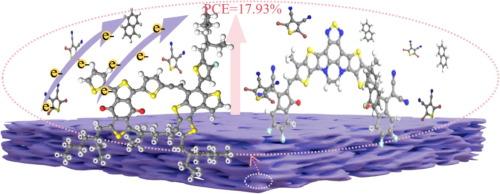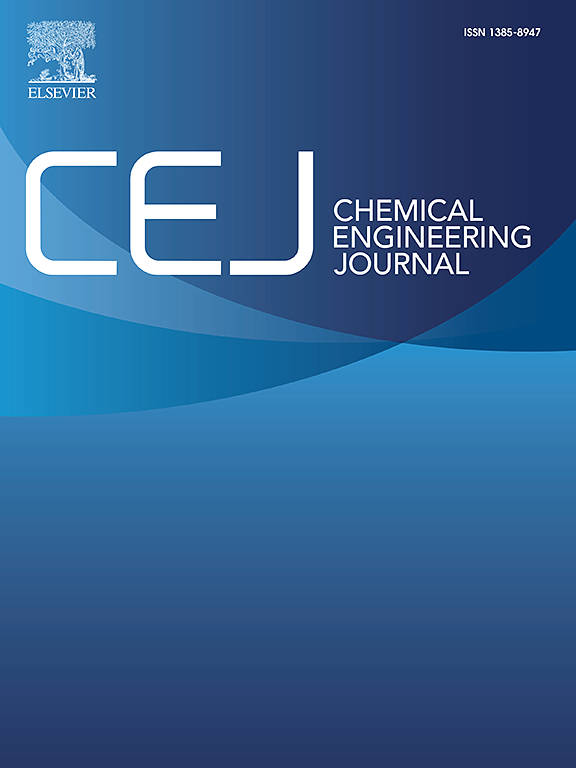Balancing carrier mobility with solvent-solid hybrid additives for high-performance non-fullerene organic solar cells
IF 13.3
1区 工程技术
Q1 ENGINEERING, CHEMICAL
引用次数: 0
Abstract
Achieving balanced electron-hole mobility remains a critical challenge in boosting the photovoltaic performance of organic solar cells, as imbalanced mobilities lead to increased carrier recombination, reduced fill factor, and lower short-circuit current density. Herein, we propose a solid-solvent hybrid additive strategy to optimize the donor/acceptor vertical distribution and π-π stacking in the PM6:Y6 active layer. 1-Chloronaphthalene was employed as the solvent additive, while 2,5-dibromo-3,4-thiophenedinitrile, a molecule with a large dipole moment, served as the solid additive. The synergistic effect of 1-chloronaphthalene and 2,5-dibromo-3,4-thiophenedinitrile induced more ordered molecular stacking and enhanced charge transport pathways, which led to significantly improved and balanced carrier mobilities. Specifically, the electron mobility increased from 4.08 × 10−4 cm2 V−1 s−1 to 1.17 × 10−3 cm2 V−1 s−1, and the hole/electron mobility ratio (μh/μe) decreased from 1.62 to 1.15. These improvements facilitated more efficient exciton separation and suppressed charge recombination. Consequently, the OSCs exhibited simultaneous improvements in short-circuit current density, fill factor, and power conversion efficiency, with the PCE increasing from 16.35 % to 17.93 %. This study highlights the potential of solid-solvent hybrid additive strategies for balancing charge carrier mobilities and advancing OSC performance

求助全文
约1分钟内获得全文
求助全文
来源期刊

Chemical Engineering Journal
工程技术-工程:化工
CiteScore
21.70
自引率
9.30%
发文量
6781
审稿时长
2.4 months
期刊介绍:
The Chemical Engineering Journal is an international research journal that invites contributions of original and novel fundamental research. It aims to provide an international platform for presenting original fundamental research, interpretative reviews, and discussions on new developments in chemical engineering. The journal welcomes papers that describe novel theory and its practical application, as well as those that demonstrate the transfer of techniques from other disciplines. It also welcomes reports on carefully conducted experimental work that is soundly interpreted. The main focus of the journal is on original and rigorous research results that have broad significance. The Catalysis section within the Chemical Engineering Journal focuses specifically on Experimental and Theoretical studies in the fields of heterogeneous catalysis, molecular catalysis, and biocatalysis. These studies have industrial impact on various sectors such as chemicals, energy, materials, foods, healthcare, and environmental protection.
 求助内容:
求助内容: 应助结果提醒方式:
应助结果提醒方式:


